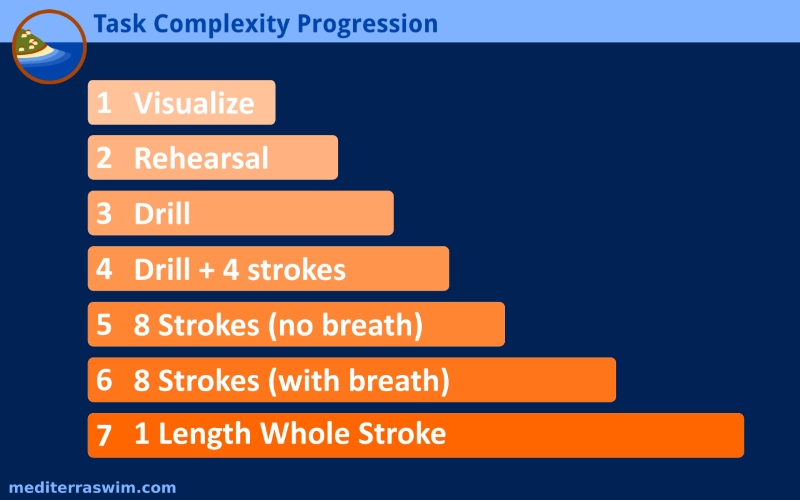How Can We Help?
How to Practice Your Skills
How to Practice Your Skills
In our training sessions you have the coach to guide you as you get familiar with the new skills, drills and cues. That’s just the start. The rest of the integration process requires you to practice on your own between sessions and after. Just like learning a new musical instrument or a foreign language, it will take time and practice for these skills to get stronger and more automatic.
I recommend that you be patient in your personal practice times to work with simple activities (the drill sequence we listed above) and gain some familiarity with the skills before jumping straight to whole stroke and swimming multiple laps.
A Generic Practice Pattern
You are aiming to practice in the ‘sweet spot’ of challenge – not too little and not too much – to develop these skills in your personal practice time. Some of you may need to stay with less complex drills until the movements become familiar to your brain and you can do the movements at normal movement speeds. Others may feel like you need to move in whole stroke more than drills. You need to choose what level of complexity will allow you to most readily acquire and repeat those new skills with high quality.
Here is the outline for how you might construct a practice…
Swim 3 rounds, with a different skill project for each round
• Round 1 – Streamline Position
• Round 2 – Recovery Swing
• Round 3 – Entry
In each round swim 2 cycles
• Cycle 1 – focus on the right arm or right side
• Cycle 2 – focus on the left side
• Or you may alternate, right side focus, left side focus
Activities in order of complexity

You want to choose 2 or 3 activities (tasks) to use during the set, and do them in the order of increasing complexity. Choose one where you can fairly easily achieve the cue objective. That is your tune up. Then move to the next task of slightly increased complexity for the brain. Then move to a third task which will really challenge your ability to maintain quality. You are looking for the sweet spot of challenge which will require your best concentration, and provoke some failure (20-40% of the time). That’s the best kind of work which will provoke the brain and body to greater adaptation and growth.
For example, if the skill is new and not very stroke you may choose:
• Drill for 2 minutes
• 2x (drill plus 4 strokes)
• 2x 8-strokes (without breathing)
If the skill is more familiar and you can easily do it during basic drills you may choose:
• 2x 8-strokes (without breathing)
• 2x 1 length with interrupted breathing
• 2x 25 whole stroke with breathing
To follow the pattern described above: 3 rounds x 2 cycles = 6 times you would go through this set of tasks, changing the skill project after 2, and alternating your focus on one side of the body to the other.
